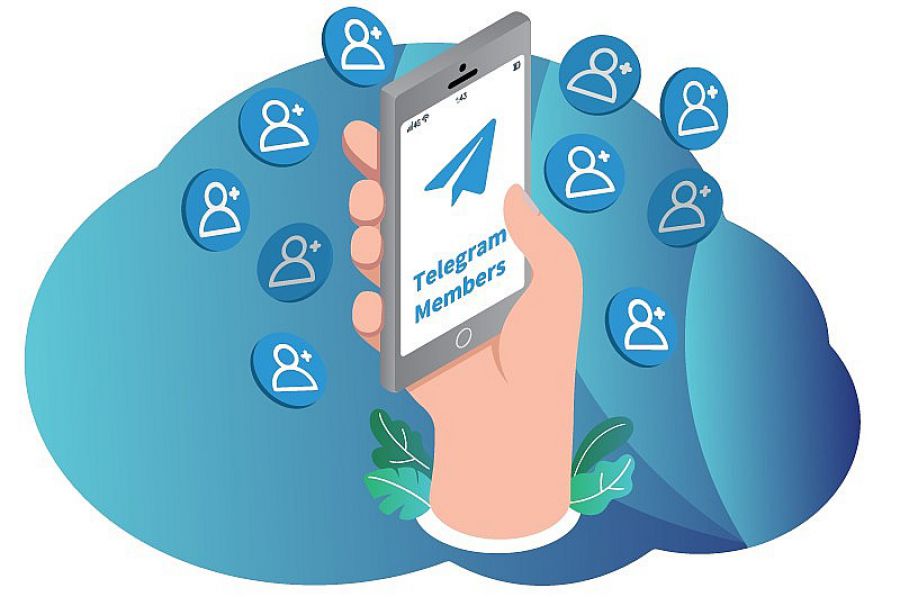Dictionary of SMM Terms: What a Specialist Needs to Know

Working in the field of SMM (Social Media Marketing) is not just a profession; it is both an art and a science. In a world where information evolves at an unprecedented speed and accessibility, SMM professionals play a crucial role in shaping a brand's image, engaging with the audience, and achieving a company's business goals. They operate in the ever-changing online environment, which makes their task simultaneously important and challenging.
In this article, we will explore the terms that make up the foundation of SMM and are essential knowledge for every SMM specialist. A structured dictionary of SMM terms will not only help newcomers master the basics of this profession but also assist experienced professionals in recalling key concepts and keeping their knowledge up to date.
Why should an SMM specialist know these terms and keep their information up to date in their mind?
Knowledge of terminology and the continuous updating of information are becoming key components of success for SMM specialists because they reflect their professionalism and enable them to adapt in the ever-changing world of social media updates. Here are several key reasons why knowledge of terms and the currency of information are an integral part of this profession:
- Effective communication: Knowledge of SMM terms allows specialists to communicate with colleagues, clients, and partners. This helps avoid misunderstandings and clarifications, speeding up the decision-making process and task execution.
- Strategy development: To develop successful strategies in social media, it is necessary to understand terminology and concepts such as KPI, sales funnel, and target audience. This knowledge helps define goals and select suitable tactics to achieve them.
- Data analysis: SMM analytics is an integral part of a specialist's work. Understanding terms like CTR (Click-Through Rate), CPA (Cost Per Acquisition), and conversions allows for the analysis of results and improvements in campaigns.
- Following trends: Social media are constantly changing. Knowledge of current trends, as well as terms and methods related to new features and platforms, allows one to stay informed and leverage new opportunities for brand promotion.
- Professional development: Updating information and learning new terms are essential parts of professional development. This helps SMM specialists remain in demand in the job market and increase their value to employers and clients.
Knowledge of terms and the constant updating of information in the mind of an SMM specialist not only facilitate their work but also enable them to achieve better results in their profession, where success depends on a deep understanding and the relevance of knowledge.
Key Terms:
- A/B Testing: A methodology in which two or more versions of the same web page or content element are compared to determine which one performs better.
- API (Application Programming Interface): An interface that allows different applications to interact with each other.
- Audience Engagement: The process of communicating and interacting with subscribers and customers through comments, messages, and feedback on social media.
- Autoposting: Automatic content publication on social media at specific times without user intervention.
- Brand Consistency: Maintaining a consistent style, tone, and image for the brand across all social media platforms and channels.
- CPC (Cost Per Click): A metric that determines the cost of each click on your advertisement, calculated as the total cost of the advertising campaign divided by the number of clicks.
- CPF (Cost Per Fan): The cost of acquiring a new follower or fan.
- CPI (Cost Per Install): The cost of installing an application on a user's mobile device.
- CPL (Cost Per Lead): The cost of acquiring a potential customer or lead through a marketing campaign.
- CPM (Cost Per Mille): A metric that determines the cost per thousand impressions of an advertisement, calculated as the total cost of the advertising campaign divided by the number of thousand impressions.
- CPO (Cost Per Order): The cost of obtaining an order from a customer through a marketing campaign.
- CTA (Call to Action): An element of content or advertising that encourages a user to take a specific action, such as "Buy Now," "Subscribe," "Call," and others. A good CTA can increase conversions.
- CTR (Click-Through Rate): The percentage of users who click on your advertisement or content relative to the number of views. This is an important metric for assessing the effectiveness of advertising.
- Case: A description and analysis of a specific case or project in marketing or business.
- Clickbait: A headline or content created to attract clicks but often deceives the user's expectations.
- Content Optimization: The process of adapting content (text, images, videos, etc.) for maximum attractiveness and effectiveness on social media.
- Content Strategy: A plan that determines what content will be created and distributed through social media to achieve specific goals, such as increasing brand awareness or boosting sales.
- Conversion: An action required of a user to achieve the goal of an SMM campaign. Examples of conversions may include filling out a form, making a purchase, or subscribing to a newsletter.
- Creative: Original, creative, and unique content execution that captures the audience's attention and supports the brand.
- Cross-Channel Analytics: The analysis of data and results from marketing campaigns across different channels and platforms.
- Crossposting: The practice of simultaneously posting the same content on different social media platforms.
- Deadline: The date by which a specific task or project must be completed.
- ER (Engagement Rate): A metric that measures the level of audience engagement on social media (likes, comments, shares, etc.).
- Geotargeting: Targeting an audience based on their location, allowing for more precise targeting of local customers.
- Giveaway: A contest to attract subscribers and increase engagement.
- Hyperlink: A link embedded in specific text.
- Influencer Marketing: Collaborating with influential individuals (bloggers) on social media to promote products or services.
- Influencer: An influential individual with their own audience, whose opinion can have an impact. In simpler terms, a blogger.
- Interactive Content: A type of content that allows users to interact with it, such as polls, surveys, quizzes, and more. This content typically increases engagement.
- Key Performance Indicators (KPIs): These metrics are used to measure success in SMM. Examples of KPIs include the number of likes, comments, shares, conversion, CTR (Click-Through Rate), and many others.
- Keyword Research Tool: A tool for analyzing keywords and search queries in the context of search engine optimization.
- LAL (Lookalike Audience): An audience created based on the characteristics and behaviors of an existing audience for more precise targeting.
- Landing Page: A single-page website created for a specific marketing purpose, such as lead generation or sales.
- Lead Magnet: Something valuable offered to the user in exchange for their contact information, such as a guide or discount.
- Leads: Potential customers or potential buyers who have shown interest in your product, service, or brand by providing some information about themselves, such as contact details.
- Longread: Content with long text, typically over 1,000 words, that provides detailed information or a story.
- Loyalty: The state of customer loyalty and satisfaction, contributing to repeat purchases and long-term relationships with the brand.
- Marketing Automation Funnel: An automated process for guiding customers from initial contact to completing a purchase.
- Mass Following: The act of following numerous accounts in an effort to garner attention for your own account and mutually gain followers.
- Mass Liking: The practice of automatically liking a large number of posts on social media to attract attention to your own account.
- Media Synergy: When different media channels, such as social media, search, and TV advertising, are combined into a unified strategy to enhance the impact and outcomes of a marketing campaign.
- Metadata: Information about content that aids search engines and social media platforms in comprehending and categorizing the content. This includes titles, descriptions, hashtags, and other elements.
- Native Advertising: Advertising seamlessly integrated into content, appearing natural and unobtrusive.
- Niche: A specific and focused segment of the market in which a brand or company operates.
- O2O (Online to Offline): A marketing strategy designed to attract customers from online channels to offline stores or physical points of sale.
- Optimal Posting Time: The practice of determining the best times to publish content on social media, considering audience activity patterns and geographic locations.
- Organic Advertising: The promotion of content and a brand through natural means, without the use of paid advertising.
- Organic Traffic: Traffic that naturally arrives at your social media page, without the use of paid advertising.
- ROAS (Return on Ad Spend): A metric assessing the effectiveness of advertising campaigns and their return on investment.
- ROI (Return on Investment): A metric measuring the success and profitability of an investment.
- ROMI (Return on Marketing Investment): A metric evaluating the return on investment specifically within the field of marketing.
- Reach and Impressions: Reach refers to the number of unique users who have viewed your content, while impressions indicate the total number of times your content was displayed.
- Retargeting: A marketing strategy aimed at re-engaging users who have previously visited your website or interacted with your content, with the goal of completing a conversion.
- SEO (Search Engine Optimization): The process of optimizing content and websites to improve their rankings in search engines.
- Sales Funnel: A model that illustrates the sequence of stages a customer goes through, from initial brand interaction to making a purchase. SMM specialists use the sales funnel to optimize campaigns.
- Social Media Algorithms: Systems employed by social media platforms to determine which posts and content are displayed in a user's newsfeed.
- Social Media Monitoring: The process of tracking and analyzing mentions of a brand, products, or keywords on social media to understand audience sentiment and respond to feedback.
- Social Media Trends: Current topics, popular hashtags, and discussed events that can influence SMM content and strategy.
- Sponsored Content: Paid advertising content that appears in a user's news feed or other locations to attract more attention to a brand or product.
- Target Audience: The specific group of people that SMM specialists aim to attract and engage with through social media. Identifying the target audience helps in creating content tailored to this group.
- Targeted Advertising: Advertising messages shown to a specific audience based on their demographics, interests, and online behavior, typically more effective than mass advertising.
- UGC (User-Generated Content): Content generated and shared by users, not the brand, which can include reviews, photos, videos, or other materials related to a brand's products or services.
- Unique Selling Proposition (USP): A distinctive feature or offering that sets a product or service apart from competitors.
- Usability: The evaluation of the user-friendliness of a website or app from the perspective of the user.
- Viral Content: Content that rapidly and widely spreads among social media users due to active audience participation in its dissemination.
- Viral Reach: Users who have seen your post in their feed or on someone else's page, despite not being subscribed to your account.
- Web Scraping: The process of collecting data from websites for various purposes.
Conclusion
In this article, we have explored numerous terms and concepts related to SMM (Social Media Marketing) and internet marketing as a whole. These terms play a crucial role in the work of marketers, SMM specialists, analysts, and other professionals involved in creating and promoting content on the internet. It is important to have a good understanding of these terms to effectively manage marketing campaigns, analyze results, and achieve business objectives.
It is also important to remember that each term has its own context and meaning, and their proper use helps in creating more effective strategies, increasing audience engagement, and enhancing the success of your work. Keeping knowledge up to date and staying abreast of new trends will help professionals remain competitive in the field of marketing and online promotion.
Useful article on a similar topic:
- How to calculate engagement rate correctly: in few clicks.
Try Popsters Trial plan to get content activity statistics of any pages for a next 7 days for free
Try for free







